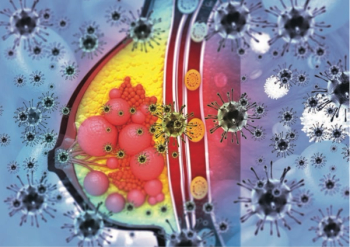
Oncology NEWS International
- Oncology NEWS International Vol 5 No 8
- Volume 5
- Issue 8
More Study Needed of Possible Carcinogenesis of Winter Gas Additive
WASHINGTON--Although the chemical MTBE, added to gasoline in the winter to reduce the emission of carbon monoxide, does not pose a substantial human health risk, more study needs to be undertaken to assess both short- and long-term health effects, a National Research Council (NRC) committee said in its review of a draft of a federal report.
WASHINGTON--Although the chemical MTBE, added to gasoline in thewinter to reduce the emission of carbon monoxide, does not posea substantial human health risk, more study needs to be undertakento assess both short- and long-term health effects, a NationalResearch Council (NRC) committee said in its review of a draftof a federal report.
The federal study assessed the effects of methyl-tertiary-butylether (MTBE) on air and water quality, motor vehicles (fuel economyand engine performance), and public health.
In areas that have not met air quality standards for carbon monoxide,federal law requires the use of additives that increase oxygenlevels in gas during winter months when lower temperatures tendto cause vehicles to emit more carbon monoxide. However, availabledata indicate that oxygenated fuels reduce winter air levels ofcarbon monoxide by as little as 0% to about 10%, the committeesaid.
The NRC committee disagreed with the report's conclusion thatonly a small percentage of the population may be sensitive toMTBE, citing studies showing an increase in health problems amongworkers exposed to MTBE on the job.
In addition, the panel said, cancer estimates for MTBE were basedon animal models and should not be taken as conclusive. The committeerecommended that further investigations be made into MTBE as apotential carcinogen.
Articles in this issue
over 29 years ago
Chemo Improves Pain Relief in Advanced Prostate Cancerover 29 years ago
NCCR Urges Congress to Support Senate Bill for Cancer Researchover 29 years ago
Researchers Propose New Treatment Guidelines for HIVover 29 years ago
Salvage Cryotherapy for Prostate Cancer Studied at M.D. Andersonover 29 years ago
FNA Dropped From RDOG Study Due To High Rate of Insufficient Samplesover 29 years ago
New Thinking on HIV Progression Leads to New Strategiesover 29 years ago
Hospitals Told Not to Capitate for 'Wrong' Reasonsover 29 years ago
President Makes NCAB Appointmentsover 29 years ago
Algorithm Identifies Women at Risk of Ovarian CancerNewsletter
Stay up to date on recent advances in the multidisciplinary approach to cancer.

















































































